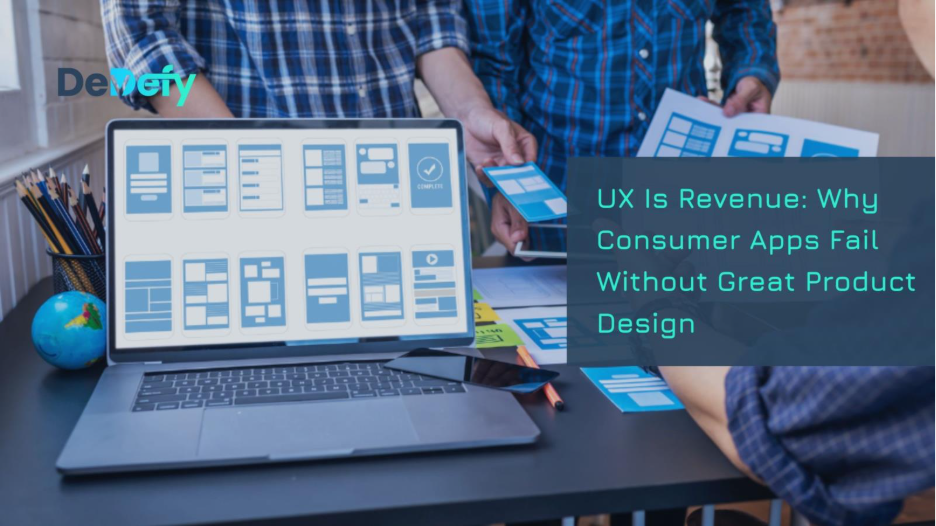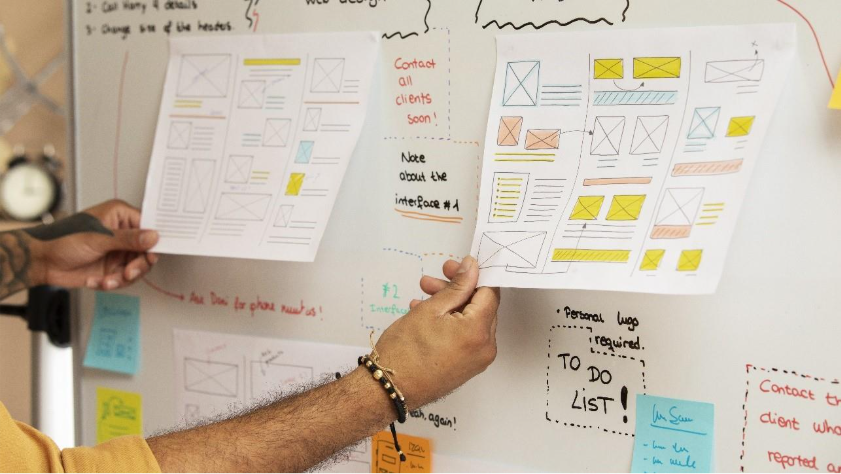
The harsh truth: “Great ideas don’t always make great apps”
You can have the best idea, the strongest tech stack, and even a solid marketing plan, but if your app UX isn’t right, users will drop off faster than you can say “uninstall.”
In today’s fast-moving digital market, B2C apps are judged not just by what they do, but how they feel. A clunky interface or confusing journey can turn excitement into frustration in seconds.
Over 70% of users abandon an app if it doesn’t deliver a seamless digital experience. That’s not a design problem; that’s a revenue problem.
Let’s break down why consumer apps fail without great product design and what you can do to fix it.
Think about the apps you personally enjoy using, the ones that just feel right from the moment you open them. They don’t confuse you, delay responses, or bury key actions behind menus. Everything flows naturally, like the app already knows what you want to do next.
This isn’t just about aesthetics; it’s about revenue.
When you’re building a consumer app, investing in app UX isn’t optional anymore. It’s the foundation for long-term growth, retention, and customer loyalty.
So, why do so many B2C mobile apps fail, even the ones with big budgets or promising ideas? Of course there are many varying reasons, but one of the leading causes is poor design decisions during the product design process.
Let’s unpack the biggest culprits:
Your first impression matters more than you think. Many apps ask users to sign up, grant permissions, or fill long forms before showing value and impatient users bounce fast.
If someone doesn’t feel immediate usefulness, they won’t come back. A smooth, friendly onboarding experience can dramatically increase return visits. In fact, 74% of visitors are more likely to return when mobile UX is good.
Good onboarding sets the tone for engagement, making users feel confident and ready to explore.
Users want simple, quick wins. When completing an action requires multiple screens, confusing taps, or extra effort, frustration grows fast.
Every unnecessary step adds mental load, and in B2C apps, that’s one of the fastest paths to churn. If users must figure out how to navigate your app, they’ll leave.
Simplifying flows and keeping tasks intuitive is key to keeping users engaged.
Consistency builds trust. When buttons, icons, and gestures behave predictably, users feel confident moving through your app.
But if interactions vary across screens, users are forced to relearn patterns and frustration sets in. In fast-moving B2C mobile apps, speed and predictability are essential.
Consistent design ensures users feel in control and reduces the chances of them abandoning your app.
Your team isn’t your user. Apps built without testing or real feedback often miss critical usability flaws.
Usability tests reveal how real users think and interact, catching issues that internal teams might overlook. Without these insights, your app risks frustration and drop-offs.
Early feedback loops are essential to guide design decisions and improve retention.
Design isn’t just about looking good, it must align with business objectives. When design, development, and marketing work separately, apps can be visually appealing but fail to convert or retain users.
Every flow should drive measurable outcomes, whether it’s engagement, purchases, or loyalty.
Aligning UX with business goals ensures that your app delivers real value for both users and your company.
Users abandon apps that are slow, crash, or lag. Performance issues are as much a design problem as a technical one.
Smooth interactions, fast loading, and responsive layouts are subconsciously tied to quality in the user’s mind.
App retention drops fast, from roughly 26% on day 1 to only about 7% by day 30. Great UX and performance together are what keep users coming back.
Here’s what separates a successful app from one that fades away:
Here’s the step-by-step product design process we recommend (and use ourselves at DevDefy) for consumer app success:

This iterative approach ensures every design decision ties back to user needs and business results.
At DevDefy, we blend strategy, UX, and code into one seamless process. Our team doesn’t just design, we build B2C mobile apps that convert, retain and delight.
Whether you’re refining your product design process or reimagining your app’s entire experience, we can help you craft the kind of app UX that users love and investors notice.
Learn how DevDefy helps brands optimize their UX pipeline and boost app engagement.
For consumer apps, UX is not a luxury, it’s the revenue engine. Without strong product design, even the most brilliant features fail to turn into growth.
But with the right process, user research, prototyping, tight collaboration between design + dev, measurement, and iteration, you can build a B2C app that doesn’t just get downloads, it earns loyalty.
If you’re ready to transform your app’s UX and stop losing users, book a FREE consultation today!
